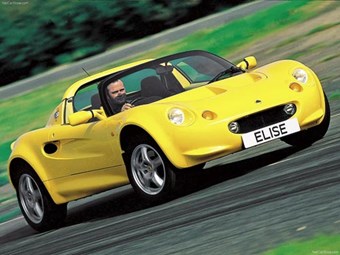Lotus Elise: Future Classic
Joe Kenwright guides us through the trials and joys of Elise ownership.

|
|
Lotus Elise
|
Lotus Elise
Exactly 50 years ago, Lotus threw away the rule book and built the Elan - a sports roadster that can still hold its own in 2012. Leapfrogging its antiquated competition was the easy part; containing cost was the hard bit. Lotus was forced to give buyers the choice of building it themselves to keep it affordable. The resulting kit-car associations haunted Lotus until the dying days of the Esprit.
As crash safety and emissions requirements set new and exacting parameters, it was one Elan option never to be repeated. Another inevitable blind alley was a front-drive Elan revival just as the Mazda MX-5 and Toyota MR2 added another degree of difficulty. Both bristled with technology once exclusive to the original Elan and its Europa stablemate, with affordability and longevity as a bonus.
Even if the mainstream British car industry is not what it was, boutique companies have now become the epicentre of the Formula One world. The McLaren F1 and Lotus Elise road cars suddenly allowed the public to access these other-world capabilities - both faithful to the minimalist Lotus philosophy. Significantly, both were inspired by the original Elan.
Elise designer Julian Thomson, then owner of a Ferrari Dino 246, drew on the landmark Lotus 23 race car from the 1960s while adding elements of his own Dino and the Ford GT40 to create the original 1996 Elise. Like each of these, his Elise defined a moment in history with a continuity that needed no sub-text.
Staying within the weight of the original rear-drive Elan and mid-engined Europa while satisfying increasingly strict safety and emissions laws dictated a new approach based on extensive aluminium extrusions. A benchmark combination spaceframe and aluminium chassis tub, bonded and riveted together, saved up to 200kg over similar designs. Exquisite, lightweight composite body skins contributed to the final 700kg tally. The Elise re-established Lotus as the pioneer it was in 1962, and the related Vauxhall VX220 and futuristic all-electric Tesla sports car validated the advances.
The Rover K-series engine complemented the Elise perfectly, accounting for a 150kg weight advantage over later Elise powerplants, though early head gasket issues suggested this came at a cost. Track-car minimalism for the road was the theme of the cockpit without looking cheap or disposable. The Stack Racing electronic instrument cluster was as much art as Thomson's exterior. Best of all, it was a hoot to drive.
Its hefty $75,000 ask implied an elderly target market, but to enter the Elise you need to be able to do the limbo, especially with the hood up. Older drivers accessing the fountain of youth won't be sending Elise prices skyward any time soon. As entry prices approach $30,000, it now has the Elan's kit car pricing to entice younger drivers - the Elise's best chance of maintaining future desirability.
Unique Cars magazine Value Guides
Sell your car for free right here
Get your monthly fix of news, reviews and stories on the greatest cars and minds in the automotive world.
Subscribe

.jpg)




.png)



